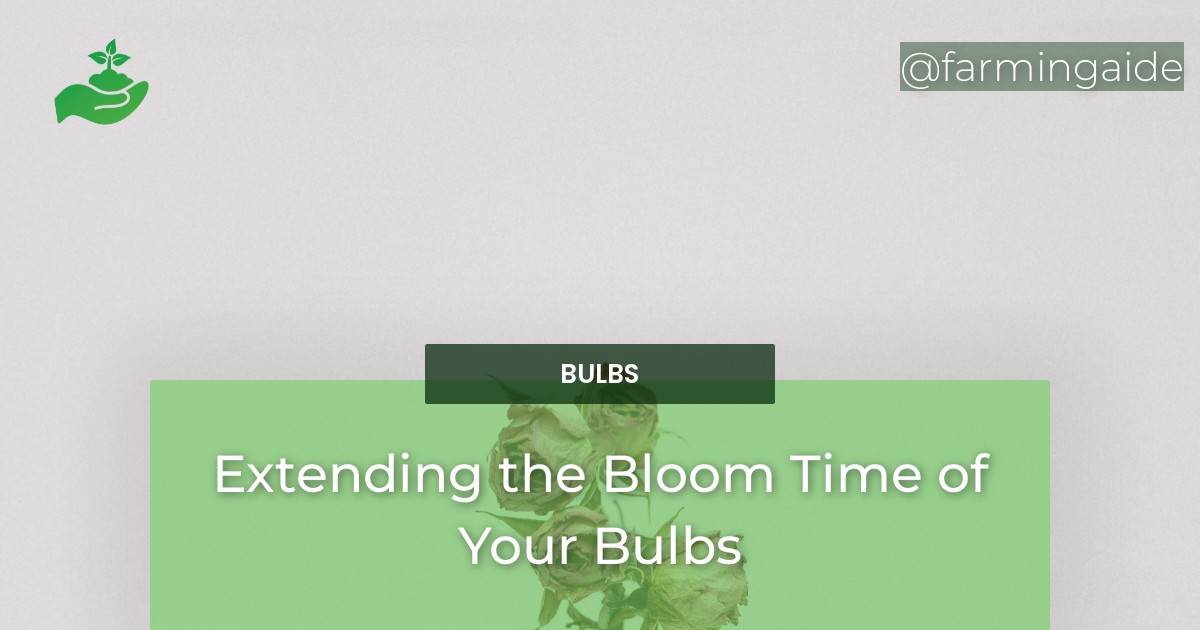Flowering bulbs are an excellent addition to any garden with their stunning colors and sweet fragrances. However, their beauty is often short-lived, and gardeners may be left wondering how to extend the bloom time of their bulbs. Fortunately, with a little knowledge and effort, it’s possible to achieve an extended bloom time for these lovely plants. In this article, we will discuss several techniques for bloom time extension and pre- and post-bloom care to ensure that your bulbs stay in bloom for longer. We will cover everything from choosing the right bulbs to optimal planting conditions, pre-bloom care, techniques for extended bloom time, and post-bloom care. So, let’s dive into the world of flowering bulbs and garden tips to keep them in their glory longer.
Choosing the Right Bulbs for Extended Bloom Time
Understanding the Bloom Time of Different Types of Bulbs
To choose the right bulbs for extended bloom time, you first need to understand the bloom time of different types of bulbs. Some bulbs, like tulips and daffodils, bloom early in the season, while others, like alliums and crocuses, bloom later. This knowledge is essential when selecting bulbs for your garden, as you will want to choose varieties with varying bloom times to extend the overall bloom time of your garden.Selecting Varieties with Varying Bloom Times
When selecting varieties of bulbs, it’s important to choose those with varying bloom times. This way, you can enjoy a more extended bloom season in your garden. Additionally, by mixing early and late blooming bulbs, you can create a layered effect, with bulbs blooming at different heights and times, providing a more visually appealing and natural look.Optimal Conditions for Bulb Planting
Planting bulbs in optimal conditions is critical for extended bloom time. Choose a planting site with well-drained soil and plenty of sunlight. Bulbs should be planted at the correct depth, usually 2-3 times the height of the bulb, and watered thoroughly after planting. Additionally, adding a layer of mulch can help retain moisture in the soil and protect bulbs from extreme temperatures.Pre-Bloom Care for Extended Bloom Time
Proper Soil Preparation
Proper soil preparation is essential for pre-bloom care. Bulbs require well-draining soil with plenty of organic matter. If your soil is heavy, add compost or peat moss to improve drainage and add nutrients.Adequate Watering Techniques
Adequate watering is essential for bulb growth and bloom time. Bulbs should be watered regularly, and the soil should be kept moist but not waterlogged. Avoid overwatering, as this can lead to bulb rot and other issues.Essential Nutrient Supply
Bulbs require essential nutrients to grow and bloom. Consider adding a slow-release bulb fertilizer to the soil during planting. Additionally, adding bone meal or bulb booster can help provide the necessary nutrients for healthy growth and extended bloom time.Maintenance of Pest and Disease Control
Preventing pests and diseases is an essential part of pre-bloom care. Keep an eye out for pests like slugs, snails, and rodents, which can damage bulbs and prevent them from blooming. Additionally, inspect bulbs for signs of disease, such as mold or rot, and remove affected bulbs immediately.ALSO READ


